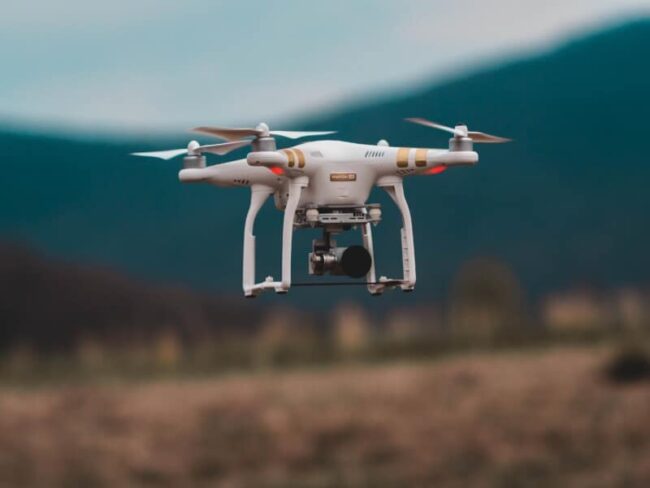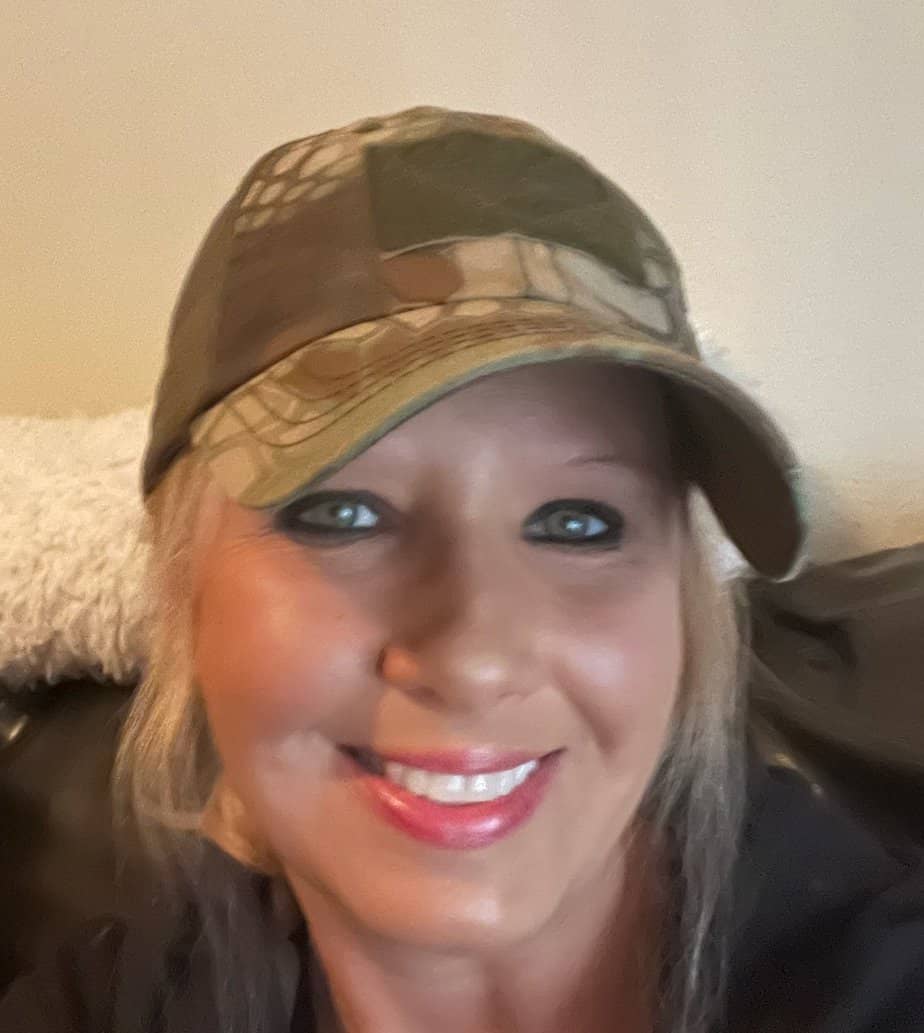In this article, we discuss the use of retail drones (quadcopters) within the private investigation sector.
DISCLAIMER We are not attorneys and you should not construe anything in this article as legal advice! Please use common sense and follow the statutes of the individual states in which you practice.
What is a Drone?
A drone is any vehicle that can be piloted remotely for the purposes of reconnaissance or surveillance. There are generally two categories of drones: the quadcopter type and the unmanned aerial vehicle (UAV).
The quadcopter is the “civilian” version and is the one most in use today. Quadcopters have many uses and are available to the general public from retailers such as Amazon or Best Buy. Their costs can range from a few hundred dollars to several thousand dollars. They have a wide range of accessories and upgrades that can change the vehicle’s usability. These accessories can help the user customize and tailor the device to his or her desires. The quality of the images these products produce and the range of these devices is far inferior to that of an unmanned aerial vehicle, or UAV.
A UAV is generally considered the “aircraft type” of drone and is the type most commonly associated with government agencies and the military. Quadcopters do not have anywhere near the same capabilities as military drones. UAV’s are primarily used for national security and/or military applications. They have very powerful cameras and can even launch weapons on a specific target from the air. Their uses and specs are highly classified and far outside the scope of this article.
In this article, we will only be discussing the far more common quadcopter variety and how it relates to private investigations.
How are Drones Used in Private Investigations?
The military, scholars, engineers, law enforcement agencies, hobbyists, and private investigators all use drones for various purposes and to fulfill a wide range of needs. Within the private investigation sector, drones can be a very beneficial tool.
For example, they can be useful in litigation cases requiring aerial footage of a crime scene or search grid, as well as aiding in the collection of evidence. Furthermore, drones can have surveillance benefits when staking out a possible location, in helping the investigator decide possible ingress and egress locations for a particular business or residence, as well as discovering whether other vehicles may be present at a particular location.
The investigator must exercise caution and discretion when using a drone for surveillance. We will get into some of the legal pitfalls of drone use in a later section.
Drones are also used to assist law enforcement and private investigators with accident reconstructions. Drone mapping software is extremely helpful in the reconstruction process. For example, DroneDeploy offers a quality software program to aid investigations where professional aerial imagery might be useful.
Drones can also allow an investigator the ability to document construction sites, sinkholes, or disaster areas. Aerial drones can also help locate a hidden property in a person’s backyard, the same way law enforcement uses helicopters to search for marijuana grow fields.
Drones are also beneficial for pre-surveillance recon. They can help determine routes available to your subject, and safely assist the private investigator with locating the subjects’ vehicle. When in need of aerial imagery, hiring a private investigator to conduct surveillance of an area is substantially less expensive than hiring a pilot to obtain information and photography within the elements.
Drones allow a private investigator to obtain real-time imagery of properties and are far superior to online tools such as Google Earth.
Why Not Just Use Google Earth?
Google Earth, when used correctly, can be a valuable tool for the private investigator. It can allow the PI to look for changes in the environment, regions of topography and surrounding areas to help assist in a case. It can also allow us to map out roadways and give us a glimpse of a location to aid in determining possible surveillance locations. However, there is currently no way to confirm the authenticity of the footage obtained via Google Earth. Trust in Google is the only validation we have that the information in Google Earth is even real. Because of Google Earth’s lack of any form of real-time validation, one cannot be certain that alterations haven’t taken place. It simply cannot establish a timeline of real-time imagery and events. And that makes it lacking.
For these reasons, Google Earth cannot be considered physical evidence within a court of law and Google Earth alone is usually inadmissible as evidence. However, the use of aerial drone imagery alongside Google Earth can help show how the topography has changed since Google captured the images. For example, construction vehicles may have damaged county sidewalks over time. This damage may have caused a jogger to trip, fall, and sustain injuries. This evidence would be valuable to an attorney in joining the construction company and homeowner in the lawsuit. Evidence of environmental changes can be beneficial to the outcome of the litigating case.
What Are the Legal Requirements of Using Drones in an Investigation?
The requirements for proper and legal use of aerial surveillance within the constraints of the law sits in a gray area. For federal compliance, the FAA requires owners to register any and all unmanned aircraft for recreation and commercial use. Any user must follow this mandate, regardless of intended use. All vehicles MUST be registered with the FAA, with no exceptions.
The local statutes vary from state to state. Within the State of Texas where we practice, the law does not permit drone use for human surveillance. Private property surveillance is permissible with consent from all property owners. This is only permissible if the investigator intends to destroy all obtained imagery. Always check the statutes within the state you are operating to make sure you stay within the law.
The following statute regulates the use of drones for the purposes of investigations in the state of TEXAS. Please consult the statutes in your state to see if they differ from those listed here.
State of Texas Statutes for Drone Use
GOVERNMENT CODE TITLE 4. EXECUTIVE BRANCH SUBTITLE B. LAW ENFORCEMENT AND PUBLIC PROTECTION
CHAPTER 423. USE OF UNMANNED AIRCRAFT
Sec. 423.003. OFFENSE: ILLEGAL USE OF UNMANNED AIRCRAFT TO CAPTURE IMAGE.
(a) A person commits an offense if the person uses an unmanned aircraft to capture an image of an individual or privately-owned real property in this state with the intent to conduct surveillance on the individual or property captured in the image. (b) An offense under this section is a Class C misdemeanor. (c) It is a defense to prosecution under this section that the person destroyed the image: (1) as soon as the person had knowledge that the image was captured in violation of this section; and (2) without disclosing, displaying, or distributing the image to a third party. (d) In this section, “intent” has the meaning assigned by Section 6.03, Penal Code.
Sec. 423.004. OFFENSE: POSSESSION, DISCLOSURE, DISPLAY, DISTRIBUTION, OR USE OF IMAGE.
a) A person commits an offense if the person: (1) captures an image in violation of Section 423.003; and (2) possesses, discloses, displays, distributes, or otherwise uses that image. (b) An offense under this section for the possession of an image is a Class C misdemeanor. An offense under this section for the disclosure, display, distribution, or other use of an image is a Class B misdemeanor. (c) Each image a person possesses, discloses, displays, distributes, or otherwise uses in violation of this section is a separate offense. (d) It is a defense to prosecution under this section for the possession of an image that the person destroyed the image as soon as the person had knowledge that the image was captured in violation of Section 423.003. (e) It is a defense to prosecution under this section for the disclosure, display, distribution, or other use of an image that the person stopped disclosing, displaying, distributing, or otherwise using the image as soon as the person had knowledge that the image was captured in violation of Section 423.003.
So, Can We Use a Drone for Investigations or Not?
We read these statutes to mean that investigators CAN use a drone in the course of an investigation IF:
- The footage only shows images of public property and no people are present (or at least identifiable) in the image.
- The investigator destroys any images of people or private property obtained during the course of the flight, as soon as he or she becomes aware that any persons or private property are present in the footage.
- The investigator does not disclose, display, or distribute any footage of people or private property to any third party. This includes even your client(s). In other words, DESTROY ALL FOOTAGE obtained via drone as soon as you become aware there is a person or private property in the image.
- It is a Class C Misdemeanor (and possible revocation of your license) if you fail to follow these statutes.
As long as you destroy any footage you get of people or private property, drones can be a wonderful recon tool. They can help you get the lay of the land, as well as information for a case that you might not be able to get any other way. Use common sense and good judgment. Don’t risk your license by doing something stupid, such as peeking inside the windows of a home. As long as you follow the statutes in your state and you keep your ethics and integrity in check, I don’t see any problem at all with using a drone during an investigation. But, as always, please check with the local statutes in the states where you practice to ensure you remain in compliance.
A Great App to Use
Kitty Hawk powers the FAA’s drone safety app. This app helps streamline drone operations and consolidates all processes into a single platform. Kitty Hawk has partnered with the FAA to create a software program to assist drone operators with airspace safety before flight check. The following is a press release from FAA Executive Director Jay Merkle:
“B4UFLY is now powered by Kittyhawk Dynamic Airspace which is our patented airspace controller for managing real-time flight restrictions, authorizations, and guidance. It’s the core technology in all our products that enables us to build tools that are responsive in real-time to the real-world changes and complexity that is our National Airspace System (NAS).”
This powerhouse combo offers reliable software that provides safety to drone operators and the public. I encourage you to check it out if you intend to use a drone during the course of your investigations. It’s that good.
Final Approach
In conclusion, drones are beneficial for many reasons to various professionals, including the military, law enforcement, educators, and private investigators. Aerial surveillance is a great tool to conduct pre-surveillance, property searches, surveys, accident and incident reconstructions, litigation support, and in the collection of evidence. This makes drones a very attractive tool, not only for private investigators but also for the attorneys and clients who hire them. Again, it is very important to conduct thorough research on the laws and regulations within your state to ensure the safety of the public we serve. As long as you use a drone within the bounds and constraints of the law, they can be a highly effective tool to help you with any investigation.


